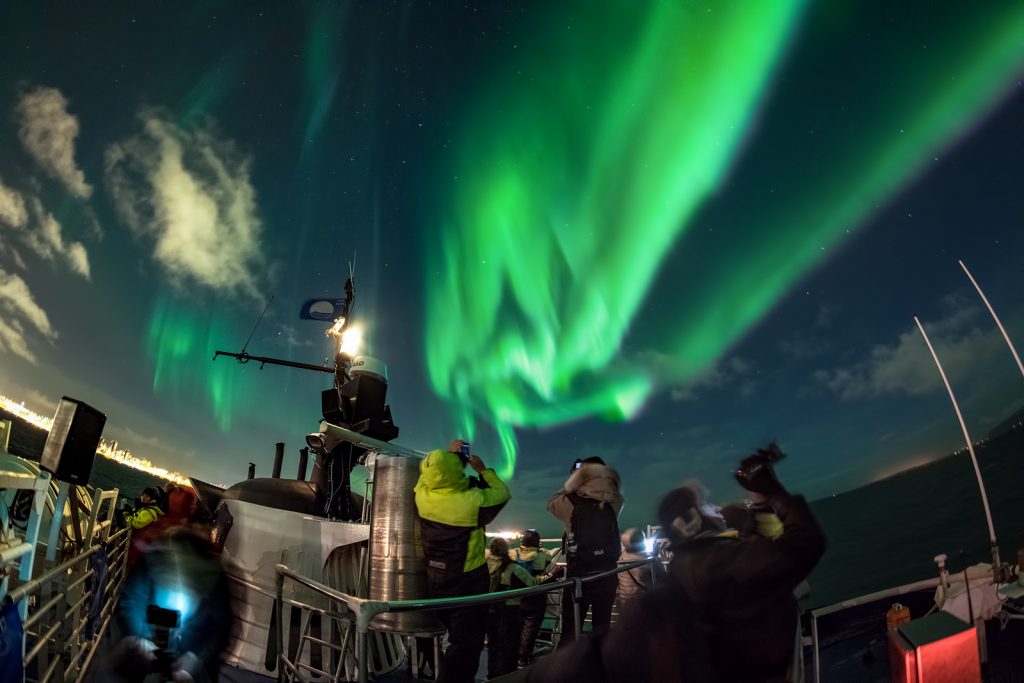How to Read a Northern Lights Forecast
The Northern Lights are an incredible natural phenomenon that has intrigued, amazed, and inspired mankind throughout recorded history. And yet, because they’re only visible in a very small part of the world, only a slim minority of people can claim themselves lucky enough to witness the greatest light show on Earth.
Iceland is one of the best places in the world to see the Northern Lights, so of course many people come visit us for specifically that reason! If you’re joining the hunt as well, there are definitely several things to keep in mind, but for this article I wanted to focus on how to read a Northern Lights and weather forecast to prepare yourself. Our experienced team does this every day when deciding whether conditions are right for our Northern Lights by Boat tours!

Predictably Unpredictable
An experienced aurora hunter will always read both the Northern Lights and weather forecasts when planning, so it’s definitely good to familiarize yourself with both of these. Of course, these forecasts are never 100% reliable, but they serve as excellent guidelines for planning purposes. The best advice is to err on the side of optimism! By far, the most important aspect of planning a Northern Lights hunt is the weather itself. In order to see the aurora, you must have skies that are at least partly clear. If the cloud cover is too widespread or too thick, then seeing the Northern Lights is unfortunately unlikely.

The Weather Forecast
The most popular website to check the weather forecast is the Icelandic Meteorological Office. There, the cloud cover is classified in 3 separate layers: low, middle, and high clouds. Low and middle clouds are the ones to worry about most, because those tend to be thicker and can obscure the night sky more easily. High clouds, meanwhile, can often be very thin, so even 100% coverage with high clouds may not completely rule out seeing the auroras. Look for areas that appear white on the map, as these are where it’s predicted to be clear at the time you choose. You can choose specific dates and times below the map, but because this forecast can change very quickly from day to day, I wouldn’t rely on it too much for more than 24 hours in advance.








